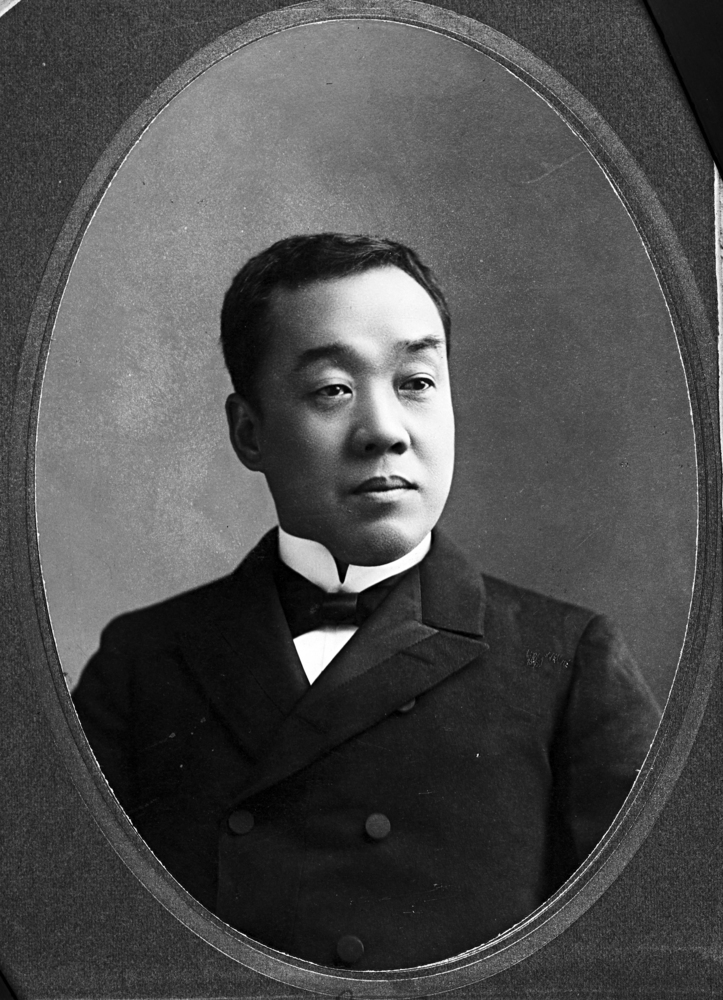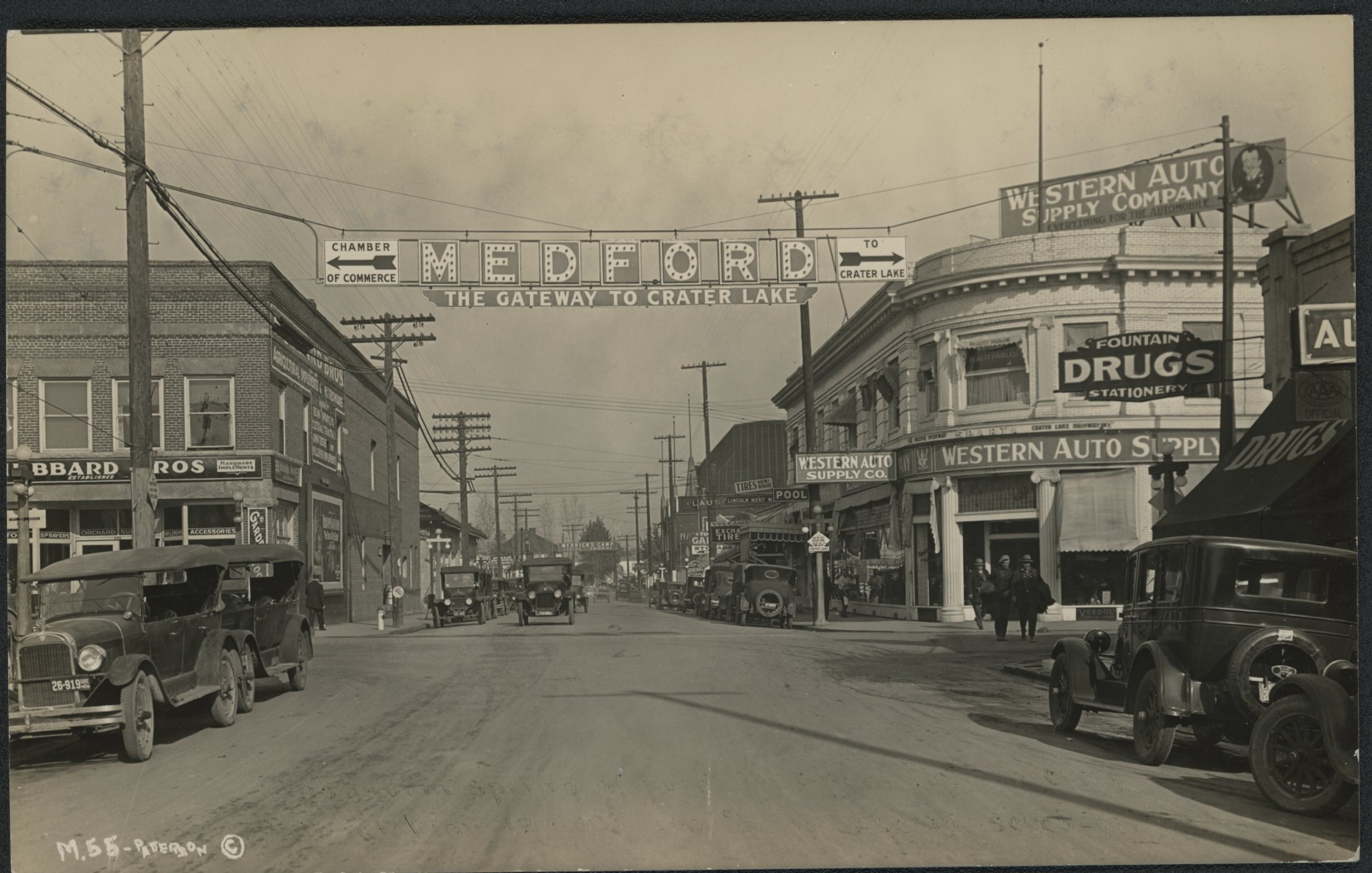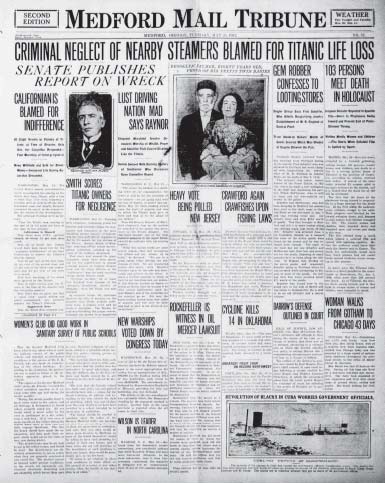Masuzo Maruyama boarded the Iyo Maru in Kobe, Japan, on March 15, 1903, his twenty-fifth birthday. When he went ashore in Seattle ten days later, he carried $110 in American money and a letter promising a job in San Francisco. Over the next thirty-eight years, Maruyama lived in Medford, Oregon, where he left his mark as a prominent advocate for the Japanese American community there.
Maruyama worked in San Francisco for three years. After the 1906 earthquake, he returned to Seattle, where he worked as a waiter at the University Club at the University of Washington. In 1909, orchardist Reginald Parsons, from Medford, was one of the more than three million visitors in the city to attend the Alaska-Yukon-Pacific Exposition. He stayed at the University Club, where he became acquainted with Maruyama.
In 1910, the City of Medford was booming, and business leaders decided to open their own University Club as “a city home for the members, most of them orchardists who lived in the country.” It would be a social center where men with a college education could gather. Parsons, a founder of the Rogue River Valley University Club, remembered Maruyama and asked him to be their steward. With his command of English and his three years of college (probably in Japan), he was a good candidate.
Maruyama, who became known as Maru, became part of Medford’s Japanese community of twenty-six young men. He began work in the club, which was located on the second floor of the Mail Tribune Building, cleaning guest rooms, ordering supplies, and doing laundry. He also managed complaints and usually cooked and served meals. He remained as steward and manager of the club for the rest of his life.
Soon after arriving in Medford, Maruyama had written his family in Japan asking them to find a woman who would be willing to come to America and become his wife. Sadako “Sada” Igarashi, who had attended the Evangelical Friends school for seven years and had worked as a secretary for the Japanese Railroad Company, fit the family’s requirements. The couple corresponded for five years and were married the day after her ship arrived in Seattle on July 19, 1916. A daughter and three sons were born over the next six years.
In 1913, Maruyama had become one of the few Japanese in Oregon who owned property. That year, on January 25, a Jackson County warranty deed was written certifying that Maruyama owned a two-bedroom house at 539 South Ivy Street in exchange for $2,100. News had been circulating in Medford of California’s proposed Alien Land Law, which prohibited “aliens ineligible for American citizenship (all Chinese, Indian, Japanese, and Korean immigrants) from owning land.” The bill passed on June 26, 1913. Oregon passed a similar law in 1923, although it did not apply to those Asian immigrants who already owned property.
As one of the older men in the Japanese community, Maruyama had stepped into a position as spokesperson for Japanese in Medford. In January 1913, he wrote the local Mail Tribune to object to a news report that two Japanese boys had committed a robbery. “The story,” he reported, “as far as it reflected upon Japanese boys is false.” After further investigation, the police said that the accusation was a hoax. It was one of many instances when Maruyama publicly defended Japanese residents in southern Oregon.
Maruyama advocated for the Red Cross and war bond drives during World War I and in 1923 played a major part in the effort to help survivors of the catastrophic Kanto earthquake that destroyed Yokohama and Tokyo, helping collect over $1,700 ($28,000 in 2021 dollars) in contributions. When a Japanese delegation, Envoys of Gratitude, toured America in 1930, Maruyama escorted them around Medford. He was an avid billiard player and hosted and played Japan’s world champion in Medford in 1925. He accompanied the Japanese Salvation Army delegation in Medford when they toured the United States in 1927 and planned a Crater Lake tour and banquet for sixty Japanese and American university students in 1935.
Masuzo Maruyama was diagnosed with stomach cancer in May 1941 and died on September 16, just weeks before the Japanese attack on Pearl Harbor. The Japanese consuls in Seattle, Portland, and San Francisco learned about his death, and hundreds of people attended his funeral. Five years later, Sadako and her children moved to Spokane, Washington, where she died in 1994. She and Maru were buried in the Greenwood Memorial Terrace Cemetery in Spokane.
-
![]()
Maruyamas in front of their house on S. Ivy Street, Medford.
Courtesy Southern Oregon Historical Society -
![]()
Maruyama (left), his children, and friends at Crater Lake, 1929.
Courtesy Southern Oregon Historical Society -
![]()
Parade in Medford, M. Maruyama walks on the far right, c. 1918.
Courtesy Southern Oregon Historical Society -
![]()
"Final Tribute for Maruyama." Medford Mail Tribune, September 19, 1941.
Courtesy Medford Mail Tribune
Related Entries
-
![Japanese Americans in Oregon]()
Japanese Americans in Oregon
Immigrants from the West Resting in the shade of the Gresham Pioneer C…
-
![Medford]()
Medford
Medford, the county seat of Jackson County, was platted in 1883 in the …
-
![Medford Mail Tribune]()
Medford Mail Tribune
For over a hundred years, the Medford Mail Tribune argued against what …
Related Historical Records
Map This on the Oregon History WayFinder
The Oregon History Wayfinder is an interactive map that identifies significant places, people, and events in Oregon history.
Further Reading
Waldron. Sue. “Maruyamas of Medford.” County Folk. Medford, Ore.: Lucky Valley Press, 2021.
"To Open Japanese Store on West Main." Medford Mail Tribune, December 12, 1912, p. 6.
"Liberty Loan Committees Have Been Appointed." Medford Mail Tribune, October 15, 1917, p. 2.
Masuzo 'Maru,' University Club Manager, Passes." Medford Mail Tribune, September 16, 1941, p.8.
"Final Tribute for Maruyama." Medford Mail Tribune, September 19, 1941, p. 7.







